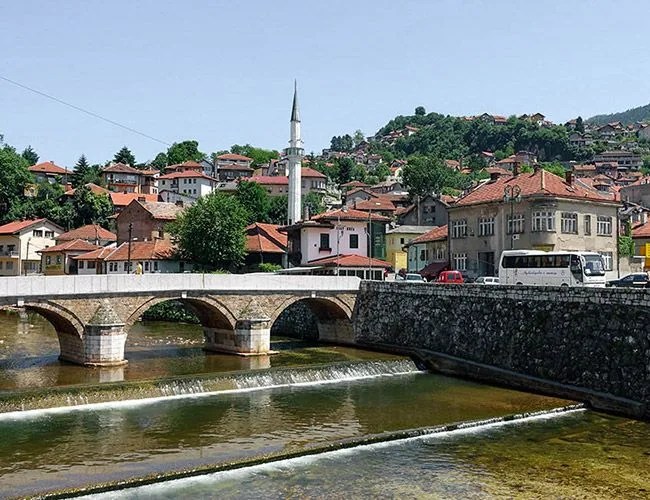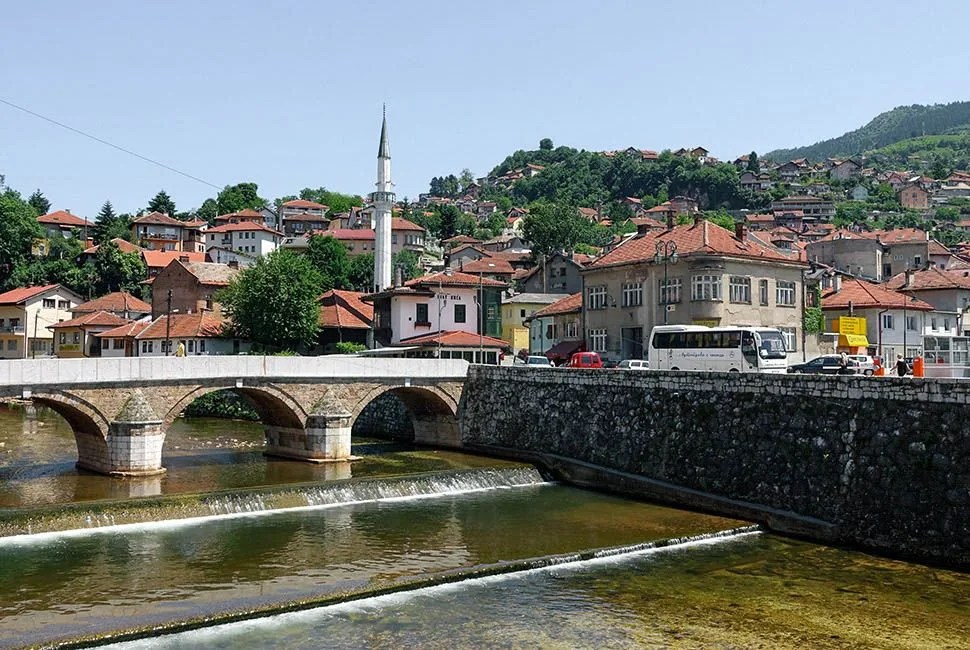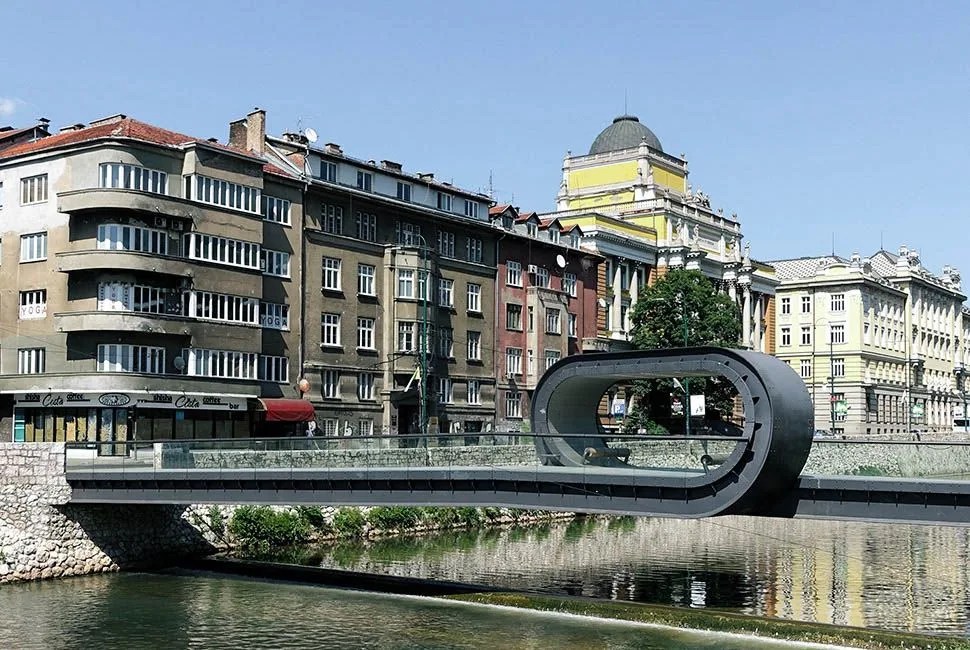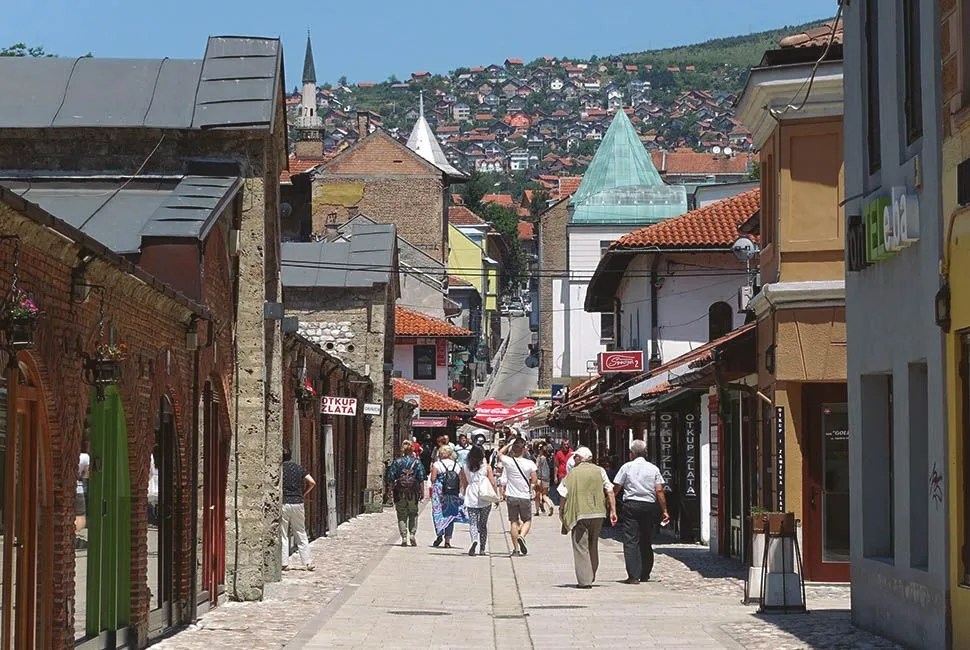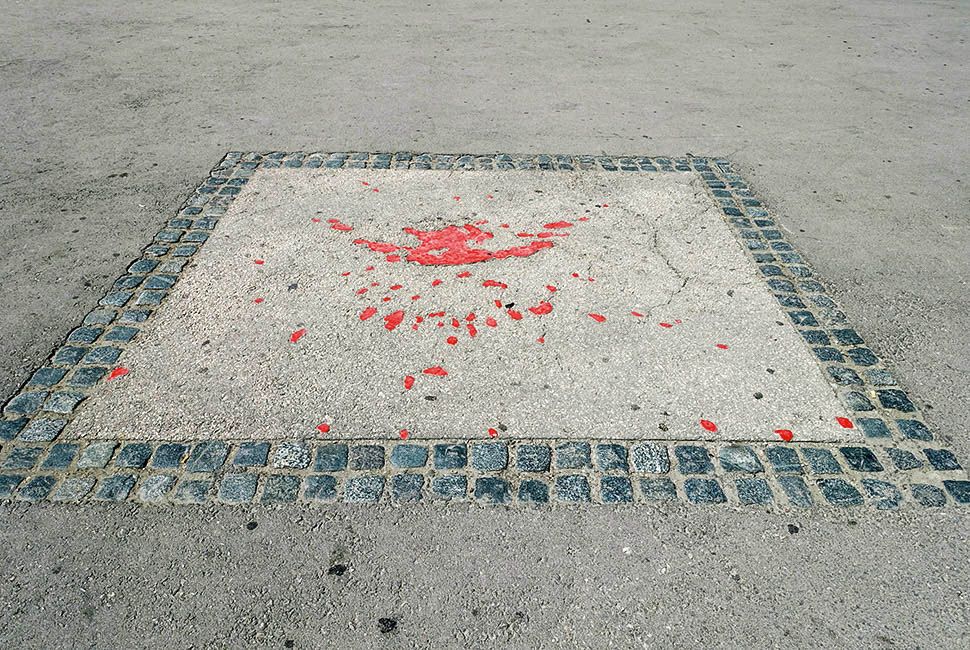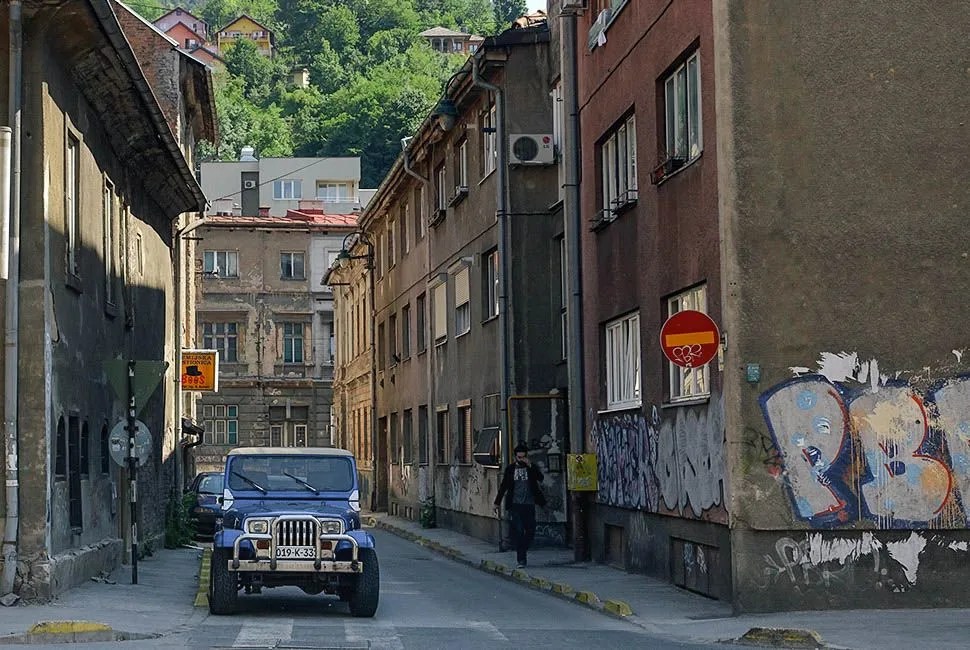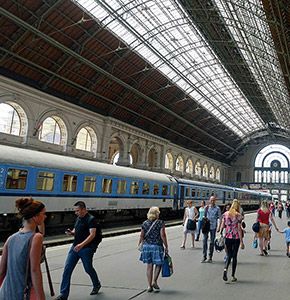7 photos
In Sarajevo, the scenery immediately stuns me. Coming in through the valley, I can see the orange roofs and the herds of sheep beside the tractors, the cows on the road, the lumber yards, and the occasional collapsing barn. I cannot see these things from the city streets, though; only the roads and the houses going up into the foothills, the rounded tops of the Dinaric Alps green and covered with trees, the wilderness up and over beyond that.
It was from these hillsides that Serbian forces from the Republika Srpska, a self-governing region due north of Bosnia, besieged the city from 1992 to 1996, firing from the surrounding hills with artillery, mortars and sniper rifles, and killing over 10,000 people, many of them civilians and children. It was, and still is, the longest siege of a capital city in the history of modern warfare. Today the city is impressively beautiful — a credit to the NATO-funded rebuild that took place after the war. But the shadow of war still looms here, nearly 20 years after the siege ended.
Later in the day, a middle-aged woman sits down next to me while I chow down during lunch at one of the city’s many cafes. She asks where I’m from. When I ask her about her roots, it takes her a second to compose herself. She tells me she used to live here in Sarajevo, but that she moved to Sweden a while back. As I pry on, tears form in her eyes. She says that she comes back once a year in an attempt to find good again, to erase some of the horrendous memories she has of Sniper Alley and of the day she was smuggled to Sweden as a Bosnian refugee.
The essence of visiting Eastern Europe is approaching the indulgence of the region’s local delights while simultaneously immersing yourself in its disturbing, bloody background.
Carefully, I begin to tell her about my Jekyll-and-Hyde experience the day before in Serbia, where some of the world’s most beautiful women walk Belgrade’s still-shattered streets, the buildings bombed by the US in the late ’90s still on display as a reminder of some sort or another: whether the wreckage is left to prevent future acts of genocide against other Balkan nations or as a hangover of hard feelings against NATO is up for debate. I tell the woman of my time exploring the Belgrade Fortress, where the Austrian Empire started World War I when it retaliated against Serbia for its assassination of Archduke Franz Ferdinand right here in Sarajevo. The woman nods her head and tells me the assassination happened “right down there”. After lunch, I walk a few blocks to the river and stand in the exact spot from which Ferdinand was shot in his motorcade in 1914, effectively connecting the dots of history in two consecutive days.
The afternoon is typical of the trip thus far, capturing the essence of what it means to visit Eastern Europe: approaching the indulgence of the region’s local delights while simultaneously immersing yourself in its disturbing, bloody background. Indeed, some of the most interesting destinations in the world — Germany, Vietnam, Greece, Johannesburg — owe as much of their appeal to the past as they do to the present. Now that countries like Slovakia and Macedonia have their independence and Croatia and Slovenia are exporting their natural beauty, it is only a matter of time before the once war-ridden countries of Bosnia, Serbia, and Kosovo begin to share their stories with the world.
